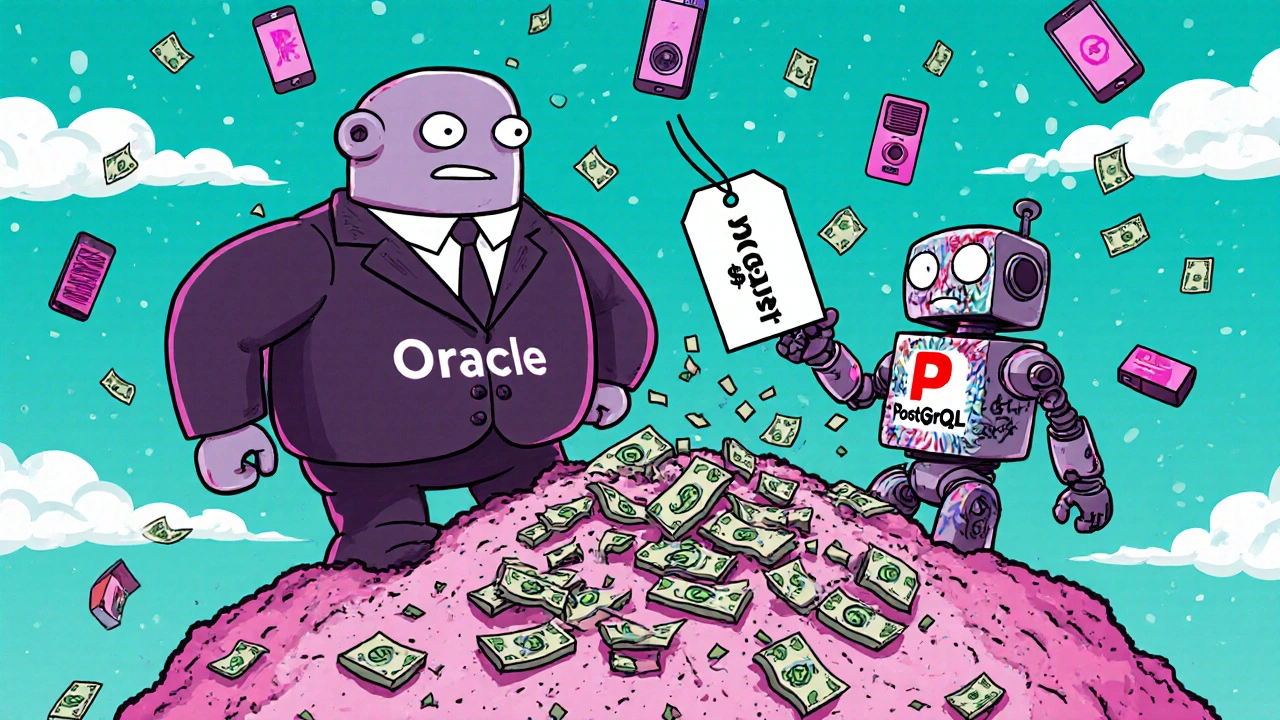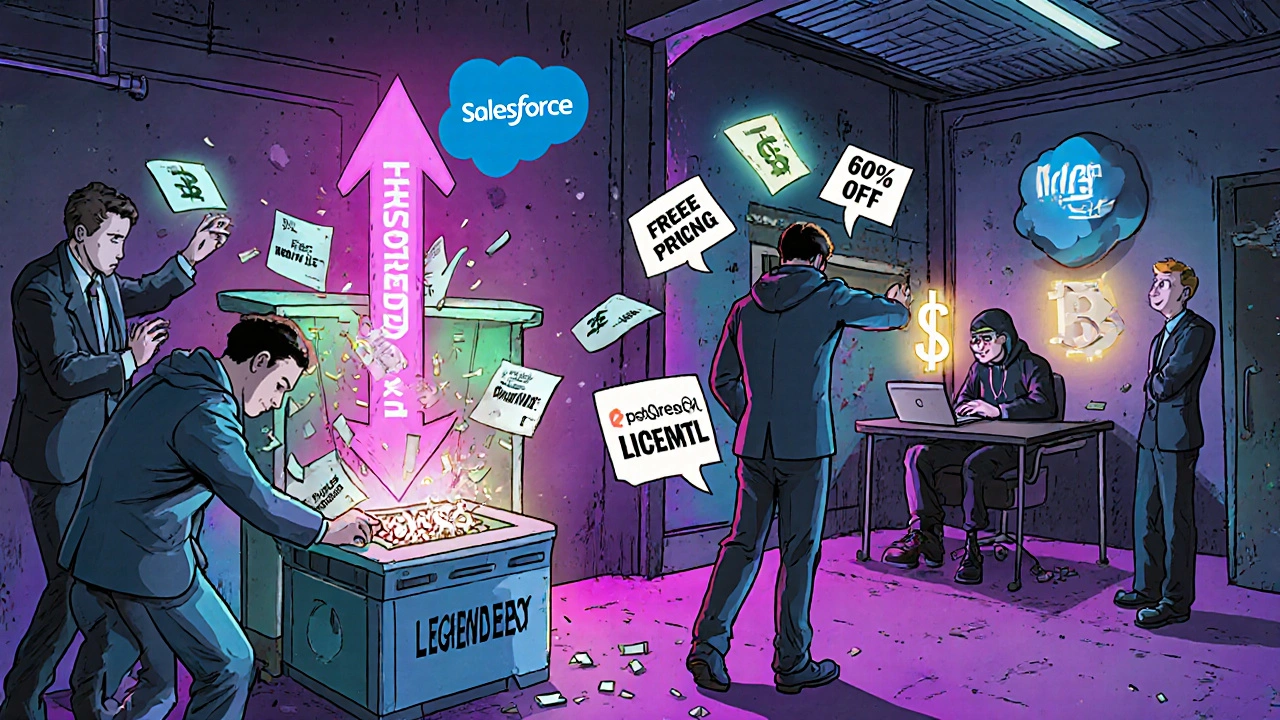 Nov, 27 2025
Nov, 27 2025
When a new product hits the market, you’d expect it to cost the most. But that’s not what happens with first generic entry. Instead, prices crash-sometimes by 80%-the moment a competitor steps in. This isn’t luck. It’s a pattern you’ve seen before, whether you bought a smartphone, switched from Oracle to PostgreSQL, or picked up a $49 Bluetooth speaker instead of an Apple one. The moment someone else offers the same thing for less, the original price becomes a relic.
What Exactly Is a First Generic Entry?
A first generic entry happens when a new player releases a product that does the same thing as an established one-but cheaper. It’s not a copy. It’s a functional alternative. In pharma, it’s when a drug’s patent expires and another company makes the same pill for a fraction of the cost. In software, it’s when a startup offers a PostgreSQL-based database that replaces Oracle, or when a cloud tool matches Salesforce’s features but costs 60% less. The key? It doesn’t need to be perfect. It just needs to be good enough. Most first generic entrants deliver 80-90% of the original’s functionality. For most businesses, that’s more than enough. And because they skip the R&D costs, marketing fluff, and brand premiums, they can price aggressively from day one.Why Does the Price Drop So Fast?
It’s not about the product. It’s about power. For years, the original company held all the cards. They owned the technology. They had the support team. They had the brand. Customers had no choice but to pay what they asked. But when a first generic entry arrives, everything flips. Customers suddenly have options. And they’re not shy about using them. Here’s how it plays out:- Company A sells a $10,000 software license. No competition. No pressure.
- Company B launches a compatible alternative for $2,500.
- Within six months, Company A’s sales drop 40%. Their customers are switching.
- Company A cuts their price to $6,000 to stay relevant.
How Do Generic Entrants Afford to Be So Cheap?
They don’t build from scratch. They stand on the shoulders of what’s already there. Take open-source software. PostgreSQL, Linux, Apache-these are free, battle-tested tools. A startup doesn’t need to write a new database engine. They take PostgreSQL, add a clean UI, wrap it in cloud hosting, and sell it as a managed service. Their cost? Maybe 20% of what Oracle spent building its own. They also cut overhead. No expensive sales teams. No global offices. Many operate with lean teams in regions where labor costs are lower. They don’t need to fund decades of marketing. They rely on word-of-mouth, developer communities, and GitHub stars. And here’s the kicker: they often start with a free tier. Offer the core product for free. Let users test it. Let them get hooked. Then upsell support, security, or advanced features. MongoDB did this. It now holds 15% of the market share that Oracle once owned alone.
What Happens to the Original Company?
They either adapt-or get left behind. Some try to ignore it. They say, “Our product is better.” But “better” doesn’t matter if it’s 4x the price and your CFO is under pressure to cut costs. Others shift their model. Microsoft did this with Azure SQL Database. When PostgreSQL-compatible alternatives started eating into their market, they switched from fixed licenses to usage-based pricing. Their effective price dropped 35% overnight. The smartest ones become part of the ecosystem. They don’t fight open-source-they embrace it. Red Hat built a billion-dollar business on Linux. Salesforce didn’t kill open-source CRM tools-they bought one (MuleSoft) and integrated it. The ones who don’t adapt? They fade. Their revenue shrinks. Their teams shrink. Their innovation stalls. And eventually, they’re just another footnote.Is It Always a Win for the Customer?
Not always. But usually. The biggest trade-off? Support. When you buy from Oracle, you get a 24/7 enterprise support team. When you switch to a new generic tool, you might get a Slack channel or a community forum. Response times can be slower. Documentation might be less polished. According to TrustRadius, 28% of early adopters report integration headaches. Migration isn’t easy. Moving data from a legacy system to a new platform can take months. And if you’re not technical, you’ll need to hire help. About 62% of companies outsource this part. But here’s what most people don’t tell you: after six to nine months, 81% of companies stick with the cheaper alternative. Why? Because the savings outweigh the headaches. One Reddit user reported switching from Oracle to PostgreSQL and cutting licensing costs by 78%. No drop in performance. Just lower bills.
Why Now? Why Is This Happening Faster Than Ever?
The speed of first generic entry has exploded. In 2010, it took an average of 18 months after a patent expired for a generic version to appear. Today? Six months. Sometimes less. Why? Three things:- Cloud computing. You don’t need to install software on servers anymore. You spin it up in minutes. That lowers the barrier to entry dramatically.
- Open source. Code is freely available. Developers can fork, tweak, and launch in weeks.
- Regulation. The EU’s Digital Markets Act now forces companies to make their systems interoperable. That makes switching easier-and cheaper.
What Should You Do If You’re Buying or Selling?
If you’re buying software or hardware:- Wait 6-12 months after a new product launches. Prices will drop.
- Look for “commercial open source” options. They’re often the sweet spot-free to start, paid for support.
- Test before you commit. Use free tiers. Try the demo. See if it works with your tools.
- Don’t assume brand = quality. Check reviews on G2 or Capterra. 63% of users say cost savings came without losing features.
- Stop relying on license fees. Customers are done paying for them.
- Move to usage-based or subscription pricing. Charge for value, not access.
- Build a community. Open-source projects thrive on users who contribute, report bugs, and spread the word.
- Don’t wait for a competitor to hit you. Be the first to undercut yourself.
Final Thought: The Market Is No Longer a Monopoly
The old model-build it, own it, charge whatever you want-is dead. First generic entry isn’t a threat. It’s the new normal. The winners aren’t the companies with the fanciest logos. They’re the ones who listen to customers, move fast, and price fairly. The losers? The ones who think their brand alone justifies a premium. If you’re waiting for prices to stabilize, you’re already behind. The next generic entry is already being built. And it’s going to be cheaper than you think.What is a first generic entry?
A first generic entry is when a new company releases a functional alternative to an established product-usually after a patent expires or through reverse engineering. It matches most of the original’s features but costs significantly less, forcing the original vendor to lower prices to compete.
Why do prices drop so fast after a first generic entry?
Because customers now have a choice. When a cheaper, nearly identical option appears, buyers stop paying for brand loyalty. The original vendor loses market share quickly and must cut prices to survive. In pharma, prices fall 76% on average within six months. In software, drops of 40-60% are common at launch.
Are generic alternatives reliable?
Yes, for most use cases. First generic entrants typically deliver 80-90% of the original’s functionality. Many enterprise users report no performance loss after switching from Oracle to PostgreSQL or from proprietary tools to open-source alternatives. The main trade-offs are in support and documentation-not core features.
How do generic companies make money if they charge so little?
They use models like commercial open source: offer a free basic version, then charge for premium features, support, security, or cloud hosting. MongoDB, for example, gives away its database for free but makes money from managed services and enterprise add-ons. They also save on R&D by building on existing open-source code.
Should I wait to buy new software?
Yes, if you can. Prices typically drop 30-60% within the first year after a first generic entry. Waiting 6-12 months lets you avoid paying the premium for early adopters. Use free trials to test alternatives before committing.
Is this trend only happening in software?
No. It’s happening everywhere. In pharma, electronics, medical devices, and even consumer gadgets. Apple’s iPod dropped from $399 to under $50 after competitors entered. Sony TVs lost half their price within a year. The pattern is universal: when competition arrives, prices fall.
